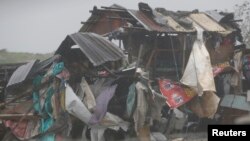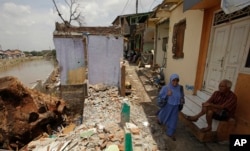East Asia and the Pacific, home to the world's largest slum population of 250 million people, need to invest more in urban planning to reduce risks like flooding and conflict, the World Bank said Tuesday.
The rapidly urbanizing region is also the most disaster-stricken in the world, it said, with many residents living in poor-quality housing on flood-prone land with limited access to basic services, it said.
"Cities across East Asia have propelled the region's tremendous growth," Victoria Kwakwa, the World Bank's Vice President for East Asia and the Pacific, said in a statement.
"Our collective challenge is to expand opportunities to all in the cities — from new migrants living in the peripheries to factory workers struggling to pay rent."
Building inclusive, safe and resilient cities is one of 17 ambitious global goals to end poverty and inequality by 2030 that were set two years ago.
The fast-growing region is regarded as a success story because it has slashed extreme poverty rates — living on $1.90 per day — to 12.5 percent in 2010 from 56 percent in 1990, which was the highest globally, the study said.
One-third of the world's urban population, or 1.2 billion people, live in East Asia and the Pacific's cities, it said.
But many are getting left behind. Poor transport limits slum dwellers' access to jobs and services, the costs of food and shelter are high, and they rarely have clean, safe toilets, it said.
"The gap between rich and poor can be quite stark in dense urban environments, which can lead to social tensions," the report said.
China, Indonesia and the Philippines are home to most of the region's urban poor, it said, while Papua New Guinea, Vanuatu, Indonesia and Laos have the highest urban poverty rates.
The World Bank highlighted Singapore as an example of successful urban planning. In less than 40 years, the tiny island nation upgraded residents from slums to clean, facility-filled public housing, it said.







